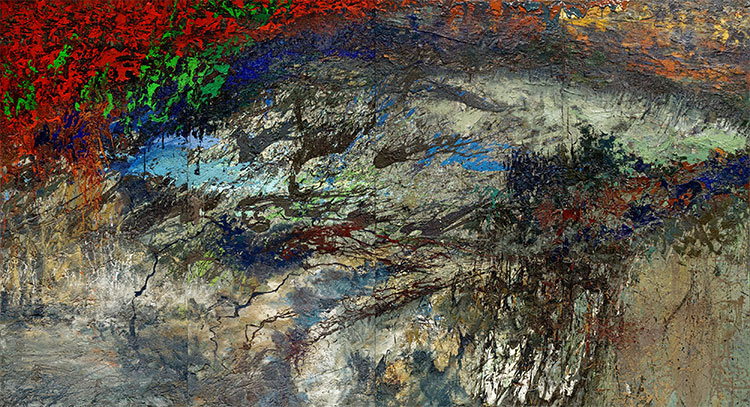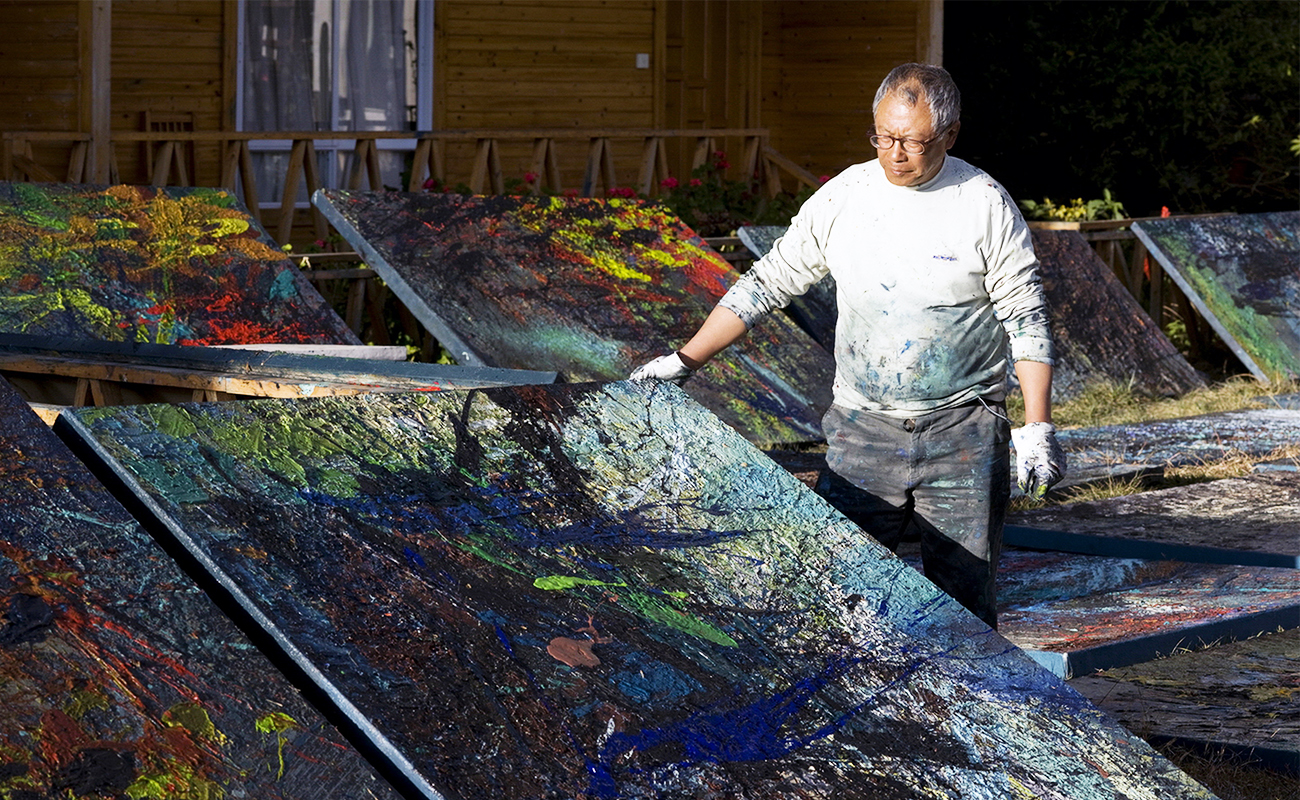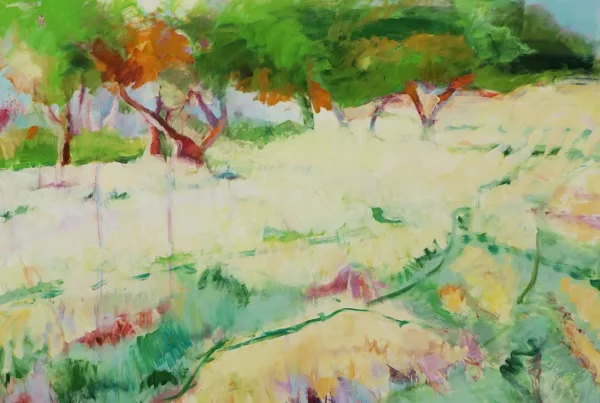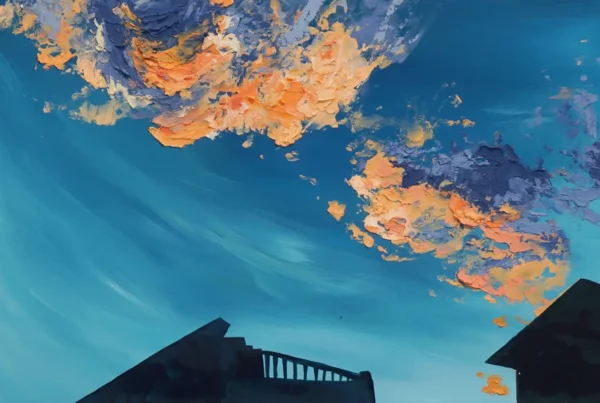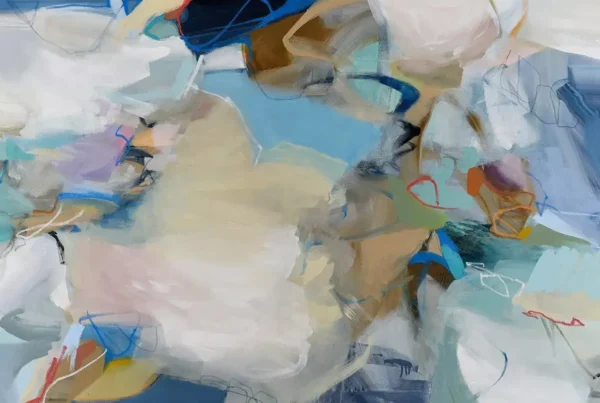“My art is influenced by the way life impacts me, as I experience everything through both hardship and action.”
From Shepherd to Artist
He is Xunmu Wu, born in Shanghai, China in 1947. At the age of 47, he began to teach himself oil painting as a means of capturing the brutal realities of life, past and present, that he had experienced as a shepherd and still continues to experience. His artistic goal is to convey the raw emotions and struggles that come with living in a harsh world through his brushstrokes.
Xunmu Wu, in his teenage years, worked as a shepherd in the pastoral region of Xinjiang, China. He was responsible for tending a flock of 410 sheep and every night, he kept watch at the edge of the sheep pen to prevent wolves from attacking. To bolster his courage, he would strike the iron sheet with a wooden stick, and the sound would echo through the wilderness. Xunmu Wu was lost in imagination as the starry sky was vast and heavy, and he dreamt of painting his awe and reverence for the universe onto a canvas.

Life and Death on the Glacier Cliffs
Later on, in the 1970s, Xunmu Wu participated in the construction of the China-Pakistan International Highway. As a road builder, his responsibility was to drill holes, place explosives, and blast open mountain ranges on the cliffs of the Kashmir Glacier. This work was extremely dangerous as they had to climb the glacier cliffs and rely on only one hemp rope for safety. While discussing the future with his colleagues, a rock suddenly fell next to Xunmu Wu and he saw his colleague’s death with his own eyes. At this location with an average altitude of 4000 meters, road construction was an extremely challenging task, with thin air, altitude sickness, and other accidents constantly troubling them. Despite the frequent deaths in this project, Xunmu Wu was lucky enough to survive, and the primitive glacier scenery and life-and-death experience on the cliff became important parts of his painting works.
In the 1980s, Xunmu Wu returned to the city and became a dock worker and porter, marking a new phase in his life. Unlike his previous experience of struggling with the natural environment, he now faced the injustices and pressures of urban living. This change gradually helped him understand the complex relationship between humans, nature, and society, and influenced his later artistic creations with deeper reflections.
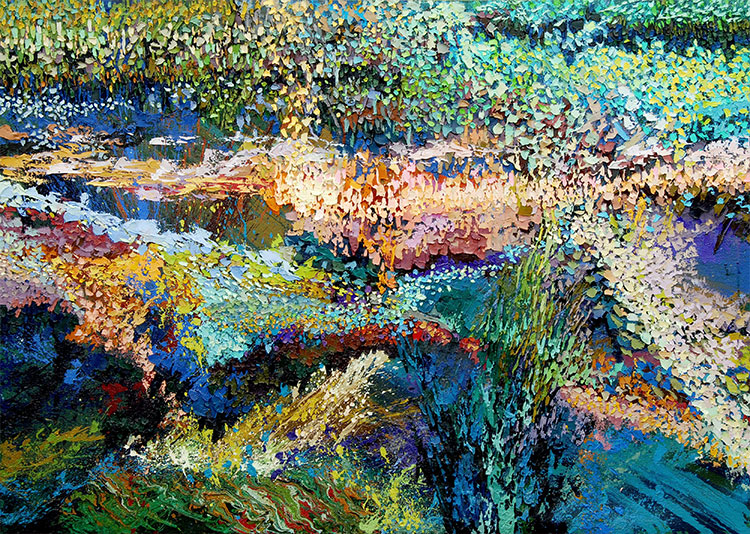
Xunmu Wu’s Five-Year Hiking Trip
In the late 1980s, Xunmu Wu embarked on a long and solitary hiking journey that spanned across the southwestern region of China and Tibet, experiencing various terrains and natural landscapes, from high-altitude deserts to subtropical forests. During this journey, he deeply felt the diversity and beauty of life. In the depths of this region, he encountered many ethnic minorities who maintained their unique and primitive religious beliefs and culture, which gave him a deeper understanding of human diversity. After completing this rugged and solitary five-year hiking journey, Xunmu Wu embarked on another, more profound and intimate journey, using his paintbrush to record his experiences and express his emotions and thoughts.
Xunmu Wu’s personal experiences have led him to use a paintbrush to contemplate the relationship between the universe, religion, nature, and individual life. By using art as a medium to explore these deep-seated issues, he has been able to deepen his understanding and awareness of the relationship between the universe, religion, nature, and individual life in a contemporary context. He experiments with a variety of visual elements such as color, shape, line, and texture to express different ideas and emotions. Using art to explore these profound concepts offers a fresh and contemporary perspective, inspiring creativity and innovation, and enables him to convey his innermost thoughts and feelings in a visual form that is relevant to modern audiences.

A Window to a Prehistoric Fairy Tale
Xunmu Wu’s artwork transcends human artistry with an organic quality that evokes a distant and forgotten past. The painting resonates with the sounds of ancient rituals and tribal ceremonies, capturing the essence of nature’s vitality and blending seamlessly with the essence of life itself. It embodies the very essence of birth, reminiscent of joyful moans during childbirth, and invites the viewer to immerse themselves in a world long lost to time, akin to a prehistoric fairy tale.
Xunmu Wu draws inspiration from his deep appreciation of life and the natural world. His art is influenced by his personal encounters with suffering and proactive engagement in action. He has created numerous works of art, including ‘Silent Wilderness,’ ‘Primitive Era,’ ‘Prehistoric Fairy Tale,’ ‘Echoes of the Sky,’ ‘Samsara,’ ‘Maelstrom in the Wasteland,’ and ‘Shepherd’s Starry Sky.’ While he holds personal attachment to specific pieces within each collection, Xunmu Wu finds his greatest sense of satisfaction in creating his next painting.
